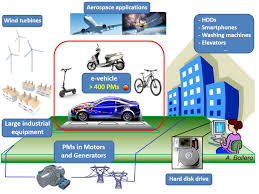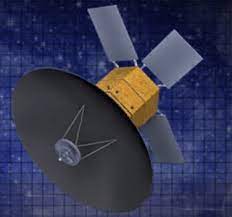PERMANENT MAGNETS
Context:
Recently, the PM has inaugurated India’s first facility to produce rare earth permanent magnets in Visakhapatnam.
What are Permanent Magnets?
A permanent magnet is a type of magnet that can create a magnetic field without needing any external power source. It is called “permanent” because once it is magnetized, it can maintain its magnetism for a long time.
Permanent magnets are usually made from certain types of metals or alloys, such as iron, nickel, and cobalt, or rare earth elements like neodymium and samarium.
What are Rare earth permanent magnets?
Rare earth permanent magnets are a type of permanent magnet that is made from rare earth elements. Rare earth elements are a group of seventeen chemical elements in the periodic table, including elements such as neodymium, samarium, and dysprosium.
Permanent Magnet:
|
Advantages over ordinary Magnet |
Compared to ordinary ferrous magnets, rare earth permanent magnets have much stronger magnetic fields and are capable of producing higher-performance, compact, and lightweight motors. These magnets are known for their exceptional magnetic properties, including high magnetic field strength and large torque generation. |
|
The technology used in the Plant |
The plant is based on indigenous reduction-diffusion technology and produces samarium-cobalt (SaCo) rare earth permanent magnets and neodymium-iron-boron (NdFeB) permanent magnets. |
|
Significance for India |
Safeguards India from supply chain disruptions in rare earth metals; Supports the Make in India initiative and boosts demand in electronics, defence, and aerospace sectors |
|
Importance |
Rare Earth Permanent Magnets find a wide range of applications in electronics, automobiles, military, etc.; Used in new technologies like hypersonic weapons and directed energy systems |
|
Benefits of Recycling Rare Earth Permanent Magnets |
Addresses the growing e-waste generation in India; Caters to domestic rare earth metal demand; Provides more rare earth metals than current imports |
|
Concerns with E-waste Collection and Recycling |
Institutional and management weaknesses; Only about 22% of e-waste was collected; Primitive recycling technology focused on recovering precious metals like gold and silver |




.jpg)
.jpg)
.jpg)
.jpg)
.jpg)
.jpg)




